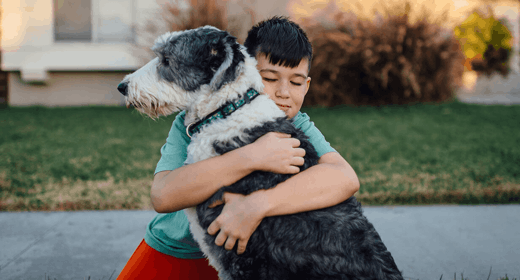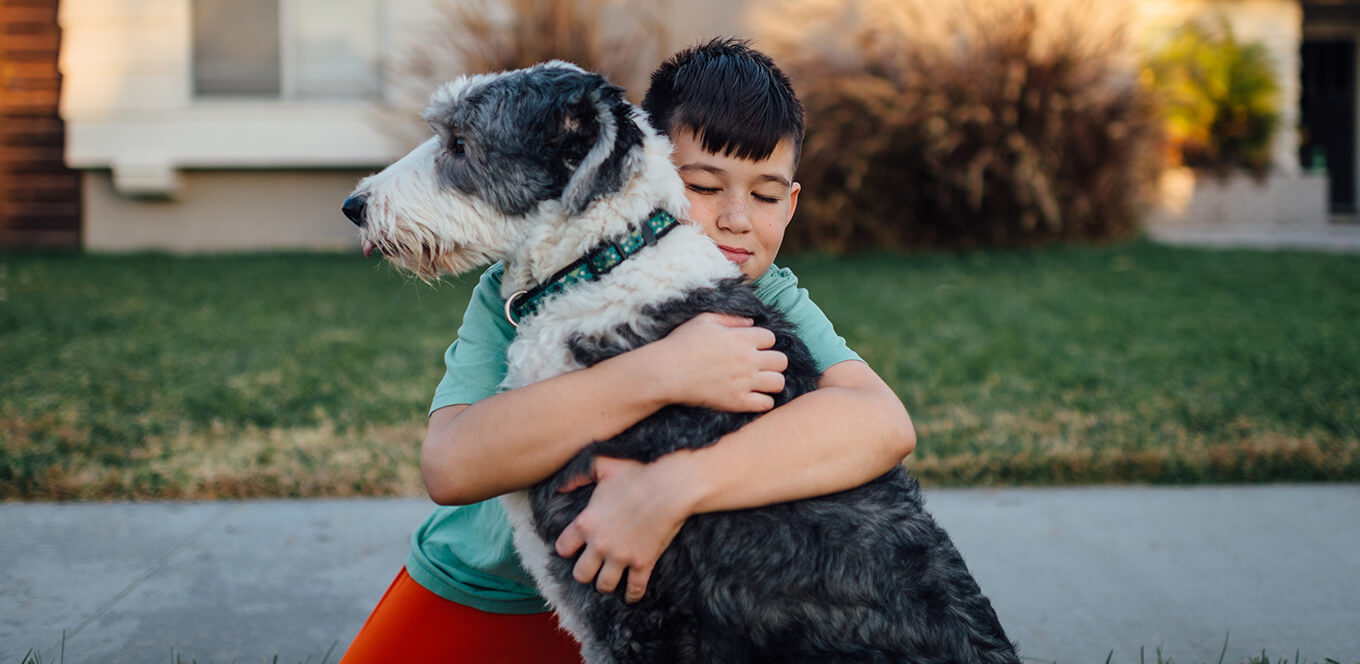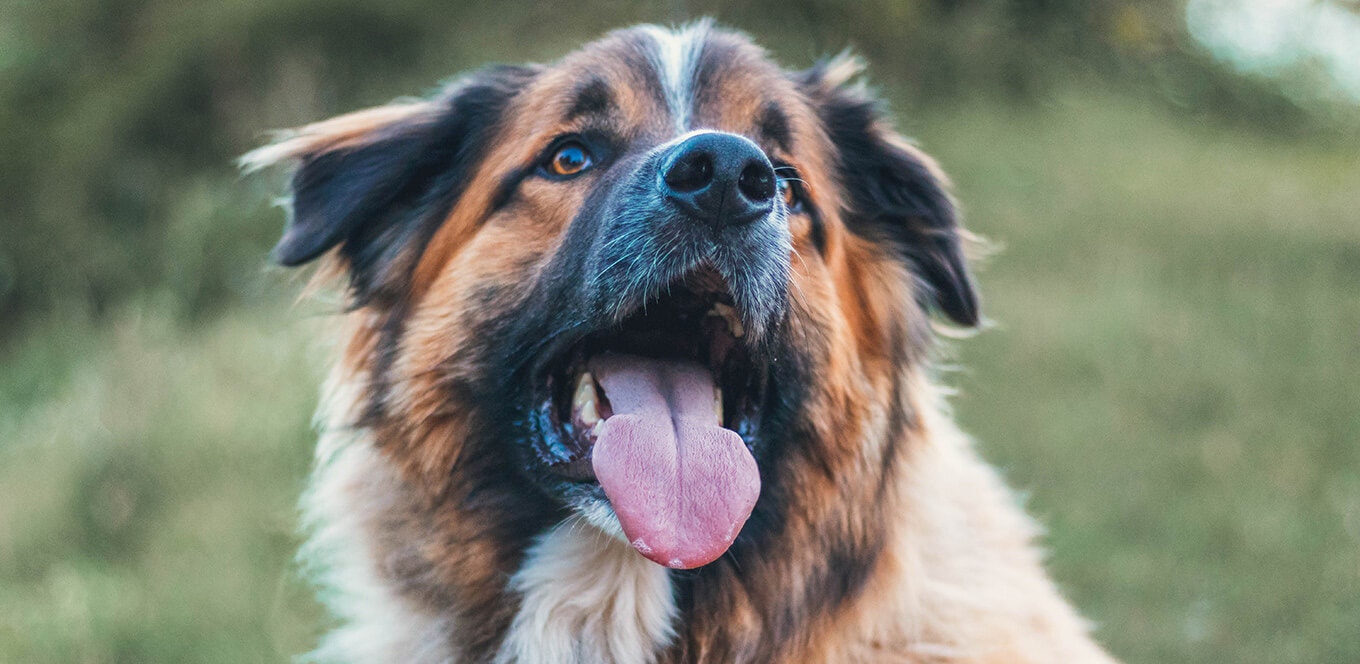

Healthy joints and proper weight are especially important for dogs that grow to be more than 50 pounds. But not all large- and giant-breed adult dogs have the same nutritional needs. Is your dog getting proper exercise? Is she about to have puppies? Special conditions can dramatically affect your dog’s nutritional demands. Giving her a food specially formulated for her large size, life stage and activity level is the easiest way to make sure she’s getting the nutrients she needs.
To address the special needs of your large- or giant-breed dog, look for these features:
These components are key to good nutrition. Look for them in treats, wet dog food, or dry dog food, such as IAMS™ ProActive Health™ Adult Large Breed.
Joint health is a big concern for owners of large- and giant-breed dogs. A large- or giant-breed formula that contains high-quality protein can help nourish healthy joints. Vitamins and minerals help promote the production of cartilage. Also, keeping your dog at a healthy weight will help minimize joint stress.
Dogs with lower activity levels and dogs that have been neutered or spayed are all prone to weight gain. Controlling your dog’s weight is an important step toward protecting against the health effects of excess weight, such as diabetes or joint health problems. If you use a weight-management food, look for these characteristics:
Pregnant dogs have substantial nutrition requirements. Starting in the seventh week of her pregnancy, a mother dog will need to increase her energy intake up to 50% by the time she gives birth and increase it even more when she starts nursing her puppies. Because she may lose her appetite at times, it's important that she eats a nutrient-dense food. A complete, balanced puppy formula can give her the extra nutrients she needs. But avoid puppy food created for large and giant breeds; these formulas contain specially adjusted levels of energy and minerals that may not be sufficient for a pregnant or nursing dog.
Dogs who grow to be more than 50 pounds are considered mature or senior at age 5 or 6, which is earlier than small-breed dogs. So, it’s critical to make a proactive transition to a specially formulated mature diet, such as IAMS™ ProActive Health™ Mature Adult Large Breed, to help keep your dog healthy and active as she ages.




One essential component often overlooked in dogs’ diets is Vitamin C, a vital nutrient that plays a crucial role in their overall well-being. Understanding the benefits and proper dosage of Vitamin C for dogs can significantly contribute to their immune system, joint health, and overall vitality. In this blog, we will delve into the importance of incorporating Vitamin C into your canine companion's diet and how it can positively impact its long-term health and happiness.
Vitamin C, commonly known as ascorbic acid, is a vital nutrient that acts as the body's all-round defender and repair agent. This water-soluble superhero does wonders, promoting healthy bones, aiding in wound healing, and giving the immune system the strength, it needs to ward off pesky infections. Imagine it as the secret ingredient in the recipe for a robust and thriving body. It is abundantly present in a variety of tasty treats like juicy oranges, tangy strawberries, and vibrant bell peppers, making it a delicious and essential part of a well-balanced diet.
While our furry friends have the ability to produce their own vitamin C, there are times when they could use a little of this nutrient. Whether they are feeling a bit under the weather, entering their golden years, or experiencing significant life changes, a dash of vitamin C can provide the boost they need.
But when on the journey of learning if vitamin C is good for dogs, remember that like any good thing, too much can sometimes lead to an upset tummy or unwanted interactions with their medications. So, before you start loading up their bowls with citrus delights, it is always wise to have a chat with your trusted vet. With the right guidance, vitamin C can be the ultimate sidekick in your dog's quest for a vibrant and happy life.
Vitamin C is not just for humans; it can work wonders for our canine companions too. Vitamin C benefits for dogs range from bolstering their immune system to aiding in injury recovery. This superhero nutrient has a range of benefits that can significantly improve a dog's overall well-being in the following ways:
Research into the effects of vitamin C supplementation in canines suggests potential benefits worth considering:
However, while the scientific data presents promising insights, the application of vitamin C in canine diets should be approached with caution. Individual variations in metabolism and health conditions may influence the efficacy and tolerability of vitamin C supplementation in dogs. Consulting a veterinary professional to determine appropriate dosages and the suitability of supplementation based on a dog's specific health needs remains imperative for a safe and effective approach to integrating vitamin C into their regimen.
When it comes to ensuring your dog's optimal vitamin C intake, understanding the various supplement forms and appropriate dosages is crucial for their overall well-being. Here is a list of some:
Each of these supplement forms offers distinct benefits and flexibility, allowing pet parents to choose the most suitable option based on their dog's preferences and specific dietary requirements. It is important to consult a veterinarian to determine the most appropriate form and dosage for a dog's individual health and wellness needs.
Vitamin C holds a vital position in the realm of canine health, serving as a cornerstone for a well-functioning immune system and efficient tissue mending. Its multifaceted role in bolstering the body's defence mechanisms and fostering speedy recovery is essential in promoting a dynamic and thriving life for our canine companions. By contributing to the maintenance of robust connective tissues and actively participating in the repair of wounds, vitamin C proves indispensable in ensuring the sustained well-being and vitality of our beloved furry friends, underscoring the importance of its incorporation into their daily regimen.
As a key player in bolstering the immune system, promoting collagen synthesis, and providing essential antioxidant benefits, vitamin C plays a vital role in maintaining a dog's overall resilience. However, it is crucial to approach its supplementation with caution, consulting a veterinarian to determine the appropriate dosage and form suitable for your dog's specific needs. With mindful consideration and proper guidance, integrating vitamin C into your dog's diet can be a proactive step in fostering their long-term health and happiness. Regular monitoring and adjustments, alongside a balanced diet and ample exercise, contribute to a holistic approach in ensuring your beloved canine companion leads a vibrant and fulfilling life.